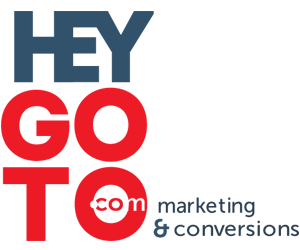Most people like to watch online video. Some business owner remain doubtful about the profit of incorporating online video into…
Basic Search Engine Optimization – Beyond the Mystery and Right to the Facts
Search engine optimization has long been the Holy Grail of Web marketing. Every website owner wants to see their sites rank well in the top engines, but exactly how to achieve this remains a mystery for most marketers.
The first thing I want to point out is this fact: The exact algorithms used by the major search engines are actually proprietary, so anyone who doesn’t work for one of these companies who tells you they know exactly what it takes to put you at the top is probably lying to you.
The truth is the search engine companies don’t want people like me understanding their systems and creating positive results for my clients. The people behind search engine technology believe their algorithms provide the perfect solution for a Web surfer’s query.
But of course you and I know better. How many times have you tried to do a simple keyword search and ended up with page after page of irrelevant results?
Whether they like it or not, the search engines do need help from proficient designers and skilled marketers. It’s up to us to add the human element that robots and software simply can’t accomplish in an effort to bring searchers the best possible results.
SEO (search engine optimization) is a term with a very broad scope. There is a great deal of work and diligence involved in producing favorable search results for your website(s), but this article will take away much of the mystery that shrouds this subject and give you the basic fundamentals you’ll need to create some real results.
First of all, you should know there are two aspects of search engine optimization; onsite and offsite. Onsite optimization refers to what you can do within your code to make your files more search engine friendly, and offsite refers to link building from other websites back to your web pages.
Solid onsite optimization involves the following steps:
Title and Meta Tags:
Your title tag should reflect your primary keyword phrase. This is HUGELY important.
Often when I visit a site I see the domain name in the title bar. The title tag is the first thing a search engine robot is going to take notice of, and if you blow this aspect of onsite optimization your remaining efforts will have considerably less impact.
For instance, on one of my sites I sell an e-book to online marketers about the pitfalls of business opportunity programs found on the web. The title of my e-book is Net Marketing Exposed, which is pretty cool, but do you think this would be an intelligent entry for the Title tag of my main page?
Of course not. Who on earth is going to search for ‘Net Marketing Exposed’?
So my title tag reads: Internet Marketing E-book | Internet Business Opportunity. My target market for the site I’m referencing consists of home-based opportunity seekers and Internet marketers so I have chosen keyword phrases that match these search terms for my Title tags.
And note you can use the pipe character ( | ) to separate multiple terms in your title tag. I recommend going with at least two phrases in your title tag, but do not use the exact same words more than three times in your title.
The debate as to whether or not search engines still reference your meta tags when spidering your site is a hot topic among SEO experts. I honestly don’t know if the major engines still read the keyword tag or not, but I add this tag anyway because it only takes a couple of minutes and why not take this extra step just in case right?
Whether or not you utilize the Meta Keywords tag is up to you but I do urge you to use the Meta Description tag. We know for a fact the engines read this tag because if you have it entered in the head section of your html it is what displays under your site title in the search listings.
So the description tag serves not only to add keyword relevance for the search engine spiders, it also acts as your ad when a searcher views your listing in the search results. Adding a quality description in this field can improve the clickthrough rate your listing receives once it is found through a keyword search.
Search engine Friendly File Names:
I recommend naming your page files in a manner that reflects your relevant keyword phrases. If you have a page that lists your articles on your site name that file articles.html instead of something useless like page02.html
Of course the main page in every directory will have to be named index, but that’s ok as the engines are hip to that; just be sure to put some thought into your other file names.
Header Tags and Page Content:
You should also use Header tags (H1, H2, H3, etc.) to illustrate important keyword phrases within your site. For example, the page title your visitor sees at the top of your content should be enclosed in H1 tags and should contain your primary keywords.
And obviously your main keywords need to appear several times in the content of each page. Placing these phrases close to the top of your content is recommended, and you should use underline, bold, and italic tags to add emphasis to your keywords within your content.
I have found the ‘strong’ tag to be of particular effectiveness. While on a visual level it serves the same purpose as the ‘b’ tag (creates bold text) my research suggests that search engine spiders respond better to the ‘strong’ tag.
Be careful not to emphasize every keyword phrase with special tags, and avoid excessive and unnatural “stuffing” of keywords onto your pages as the engines may pick this up and flag your site as search engine spam.
Image Tags:
Many designers and marketers ignore the value of proper image tagging when optimizing their templates for the engines. I can tell you right now I have seen a huge jump in ranking as a direct result of changing the structure of a site’s image tags.
First of all, remember that search engine robots read text, not images. So avoid giving your image files names like ‘header.jpg’ or ‘photo014.gif’ unless you are hoping to be ranked for search terms like header and photo.
You should also be sure to use an alt tag with every image, and enter a keyword relevant phrase as your alt tag.
Going back to my e-book site as an example, my header graphic is named http://internet-business-opportunity.jpg, and has an alt tag of “Internet marketing e-book reveals the truth about Internet business opportunities.” And the cover graphic for my book is named http://internet-marketing-ebook.jpg with a matching alt tag.
Onsite Link and Navigation Structure:
Finally pay attention to the anchor tags and navigation structure of your site. It’s better to use keyword terms for a hyperlink text than to simply use ‘click here’. I also suggest applying the Title attribute to add keyword phrases to your link tags.
Of course if you use image links refer back to the image name and alt tag rules.
And your menu should also be built around search engine friendly tags. For instance never use a ‘Home Page’ tag on your navigation; instead apply a relevant keyword.
If your website is about swimming lessons, the menu button for your home page should say ‘Swimming Lessons’ or something similar and not simply ‘Home’.
This may seem like a lot to take in, but it’s really a very simple formula for building search engine ready templates. Review this info until it is second nature and apply it to every site you build and you’ll be on your way to stronger placement in the major engines.
The last, and the most important element of basic SEO is offsite optimization. This is a fancy term for link building.
To get the most out of your onsite optimization, you need plenty of good links pointing back to your website. And you should always strive for keyword anchored backlinks over straight URLs.
Again using my example site that retails an e-book to folks with an interest in work from home opportunities, I want hyperlink text that reads “Internet marketing e-book” or “Internet business opportunity”.
A correctly built link back allows you to control what search engine spiders look for once they follow a link to your site. Once they arrive through an anchor tag that reflects your primary keywords, the spiders will proceed to look for these terms in your file tags and page content, which will of course improve your potential rankings.
This article has covered everything you need to get started with successful SEO. Master these concepts and you are certain to see a big jump in your search engine rankings!
Contact HeyGoTo at (702) 475-4227 or go to www.HeyGoTo.com today to find out how we can help you! To read more industry information go to the HeyGoTo Blog at http://heygoto.com/wordpress/
Latest posts by David Moceri (see all)
- - August 12, 2023
- Internet Marketing – The Art of Capturing Market Share - May 20, 2017
- Top 3 Social Media Mistakes Online Marketers Need to Avoid - December 31, 2016
This post was written by David Moceri

